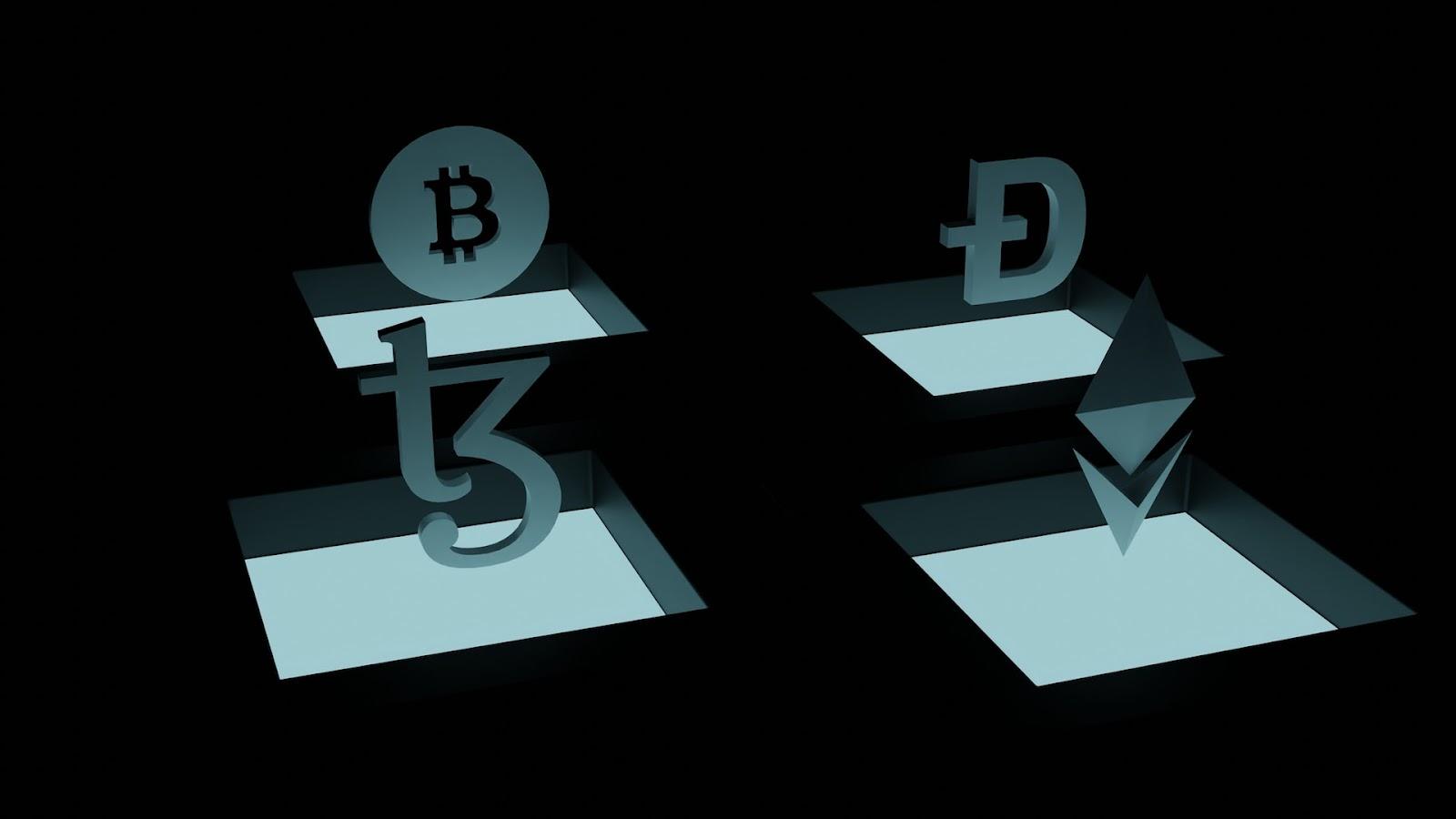Blockchain is an exciting new technology, taking the world by storm. In its simplest form, blockchain is a digital ledger that records transactions securely and transparently. It’s a distributed ledger technology, meaning it exists on multiple computers, and it can only be updated when all the computers in the network agree that the change is valid. This makes it highly secure, and virtually impossible to manipulate.
In this article, we’ll explore the power of blockchain and its use cases. Keep reading to understand the world of blockchain technology.
Innovative use cases for business transformation
The power of blockchain technology is proving to be an invaluable asset for businesses of all sizes. Whether in large corporations or small startups, blockchain technology’s potency helps revolutionize how companies do business. From streamlining supply chains to improving customer experience, blockchain technology is integral to many business operations.
The technology is already utilized in many innovative ways in the current business landscape. Here are some of the most notable use cases for blockchain technology:
Use of cryptocurrencies for financial transactions
In recent years, cryptocurrencies have become increasingly popular as an innovative use case of blockchain technology for business transformation. The mechanism of how cryptocurrency works is based on blockchain technology with a public transaction database that works as a distributed ledger.
The currency has been gaining traction in financial services and other industries as more organizations are embracing blockchain technology to streamline processes, improve efficiency, and reduce costs.
Cryptocurrencies, such as Bitcoin, Chainlink, and Ethereum, are digital assets for transactions and storing value. They ride on blockchain technology, a distributed ledger system that allows for secure, peer-to-peer transactions without the need for an intermediary.
Cryptocurrencies are decentralized, meaning that no single entity controls them, and they are cryptographically secured, making them difficult to counterfeit. Companies can issue their tokens, which are for raising funds from investors. This allows companies to bypass the traditional financial system and raise capital from investors more quickly and efficiently.
They are for various business applications, including payments, smart contracts, digital asset management, and even as a form of equity. For example, it’s a digital currency that serves as a medium of exchange, eliminating the need for third-party intermediaries and reducing transaction costs. Additionally, the currency creates smart contracts, which are self-executing agreements automatically enforced by the blockchain. It allows for the automation of business processes and reduces costs associated with manual processes.
Cryptocurrencies can also be used to create digital assets, such as tokens, which allow businesses to store and transfer digital assets securely. Tokens serve many purposes, such as representing ownership in a company, tokenizing assets, and providing access to digital services.
Balancing risk: utilize the most popular exchange-traded funds database

Are you frustrated as an investor? You may have been looking for the best way to manage risk and maximize returns. Worry less. Learn all about risk management on the most popular exchange-traded funds database. Risk parity is a portfolio management approach that seeks to achieve a balance between different asset classes. It entails using leverage or borrowing money to increase exposure to certain asset classes while reducing exposure to others.
The approach allows investors to diversify their portfolios and manage risk more efficiently. The key to risk parity is to use leverage in the right way. Leverage increases exposure to certain asset classes while reducing exposure to others. For example, an investor may use leverage to increase stock exposure while reducing bond exposure. This allows the investor to capture the stocks’ upside while limiting the bonds’ downside.
One way for investors to use leverage to their advantage is to invest in exchange-traded funds (ETFs). ETFs allow investors to access various asset classes and risks, which can help to achieve a desired risk/return profile. By carefully selecting the right ETFs, investors can build a risk parity portfolio that meets their investment goals.
Streamlining supply chains
By utilizing blockchain technology, businesses can streamline their supply chains and make them more efficient. In addition, by using blockchain, companies can track the movement of goods and materials in real-time, reducing the need for manual paperwork and ensuring that transactions are secure.
Improving customer experience
By utilizing blockchain technology, businesses can improve customer experience by allowing customers to access their data and make payments securely and transparently. With blockchain, enterprises can also create digital wallets for customers, allowing them to make payments and store their data securely.
Ensuring data security
By utilizing blockchain technology, businesses can ensure the security of their data by making sure that it is stored in a secure and immutable way. It ensures that no unauthorized access can be made and that all data is secure and private.
Collaborative business processes
Also, with the technology, organizations will collaborate on projects securely and transparently. Plus, they’ll ensure that all parties involved in a project can access the latest data and make decisions in real time.
How to invest in crypto assets: buy Chainlink

Are you interested in investing in crypto assets but need help figuring out where to start? Then, investing in Chainlink (LINK) is a great option to consider. Chainlink is a decentralized oracle network that provides reliable and secure data to smart contracts on the Ethereum blockchain. As a result, Chainlink has become one of the most sought-after digital assets in the crypto space, making it an attractive investment opportunity.
What are the core features of blockchain
While blockchain is a secure and reliable technology, it’s important to remember that it’s not a magic bullet. Blockchain is not a panacea for all security and privacy issues, nor a replacement for existing systems. Instead, it’s simply a new technology that improves existing systems.
It’s also important to remember that blockchain does not replace existing legal and regulatory frameworks.
It’s a technology that can enable better compliance with existing laws. It doesn’t replace current regulations but provides a platform for organizations to adhere to existing laws.
Finally, it’s vital to note that blockchain is not a solution to all problems. It’s a powerful tool, but it can’t solve every problem. So instead, it’s best to solve issues well-suited to its capabilities.
Decentralization
Decentralization is one of the most important features of blockchain technology. This feature implies that blockchain networks spread across a computer network that a single entity does not own or operate. As such, the data stored on the blockchain is not subject to manipulation by a single entity, making it more secure and reliable.
Immutability
Immutability is another critical feature of blockchain technology. This means that once data is recorded on the blockchain, it can’t be altered or deleted. This is possible due to the distributed nature of the blockchain network, as it is tough to manipulate the data stored in the network. As such, immutability provides users with peace of mind that the transactions conducted on the blockchain remain safe and secure.
Security
The decentralized and immutable nature of blockchain technology makes it incredibly secure. Blockchain networks employ sophisticated cryptographic algorithms to protect data stored on the network from external threats. Additionally, the consensus mechanism used by blockchain networks ensures that the record of every transaction is validated and stored securely.
Transparency
Transparency is another core facet of blockchain technology. All the transactions recorded on the blockchain are visible to every user on the network. It makes it easy to track the entire history of a transaction, including when it happened, who was involved, and how much was transferred. This level of transparency ensures that businesses can track their transactions with ease and accuracy.
Smart contracts
Smart contracts are an advanced element of blockchain networks that allow users to execute agreements and transactions securely. These self-executing contracts run on blockchain technology and can be used to automate various tasks such as payments, asset transfers, and other activities. Smart contracts make it easier to conduct transactions and agreements securely and transparently.
Blockchain trilemma: decentralized, scalable, and secure

The blockchain trilemma is the difficult balancing act developers face when creating secure, decentralized, and scalable blockchain networks. This problem has no easy solution, but developers continually experiment with new strategies.
Ultimately, the success of blockchain networks depends on finding the right balance between decentralization, scalability, and security. The blockchain trilemma is a complex challenge, but it is possible to achieve all three objectives.
The key is to find the right balance between decentralization, scalability, and security. For example, developers can use different technologies like sidechains and sharding to increase scalability without sacrificing decentralization or security. Similarly, they can use consensus algorithms such as proof-of-stake and proof-of-work to maintain a secure network without compromising scalability or decentralization.
Unlock the power of blockchain
As you can see, the power of blockchain technology is crucial for businesses of all sizes. By utilizing blockchain technology, companies can streamline operations, improve customer experience, ensure data security, and collaborate on projects securely and transparently.
As we move further into the future, the power of blockchain technology will only become essential for businesses.
So, if you want to revolutionize your business, consider unlocking the power of blockchain technology. With its myriad innovative use cases, blockchain technology will surely help businesses succeed.
The post Unlocking the Power of Blockchain: Innovative Use Cases for Business Transformation appeared first on Datafloq.

